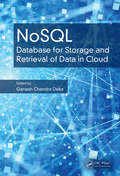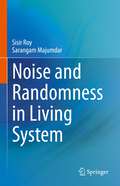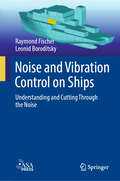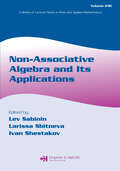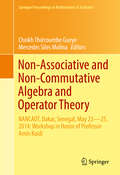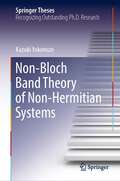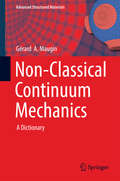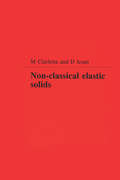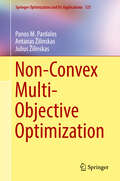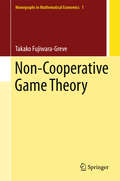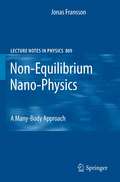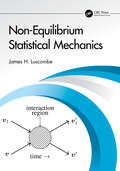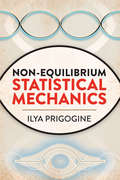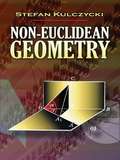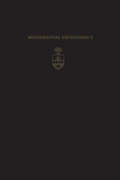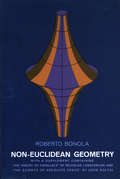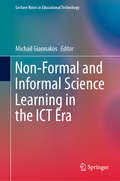- Table View
- List View
NoOps: How AI Agents Are Reinventing DevOps and Software
by Roman VorelTraditional DevOps is struggling with new challenges in today's fast-changing software world. With the rise of microservices, cloud-based systems, and AI-driven automation, managing software has become increasingly difficult. Teams often deal with too many tools, repetitive manual tasks, and slow innovation. NoOps provides a clear guide to using AI to streamline DevOps and reduce manual work. The book starts by explaining how DevOps has evolved and why software development has become so fragmented. It highlights the importance of standardization as the first step toward NoOps. Readers will learn how AI can improve coding, testing, infrastructure management, and software deployment. It covers AI-powered development tools, automated testing, self-managing infrastructure, and intelligent AI agents that handle deployments and fix problems automatically. Real-world case studies show how companies are already using AI to transform their DevOps processes. Beyond automation, NoOps also explores how AI will change job roles, requiring new skills and shifting how teams work. It discusses ethical concerns, team dynamics, and the future of AI-driven software development. Whether you're a developer, DevOps engineer, or tech leader, this book will help you understand and prepare for a future where AI plays a major role in software delivery. What you will learn: How DevOps has evolved and why traditional methods struggle with modern software challenges. How AI can automate coding, testing, and infrastructure management to streamline workflows. Explore AI-driven DevOps strategies, including AI orchestration, self-healing infrastructure, and predictive analytics. Discover real-world case studies of companies successfully using AI to improve software delivery. Who this book is for: Technical Executives, DevOps Engineers & SREs looking to automate testing, monitoring, infrastructure, and CI/CD. Software Developers who want to write better code faster using AI-driven development tools. QA Engineers & Testers responsible for functional, integration, and performance testing who need to automate and self-heal test cases with AI.
NoSQL: Database for Storage and Retrieval of Data in Cloud (Advances In Computers Ser. #Volume 109)
by Ganesh Chandra DekaThis book discusses the advanced databases for the cloud-based application known as NoSQL. It will explore the recent advancements in NoSQL database technology. Chapters on structured, unstructured and hybrid databases will be included to explore bigdata analytics, bigdata storage and processing. The book is likely to cover a wide range of topics such as cloud computing, social computing, bigdata and advanced databases processing techniques.
Noise Sensitivity of Boolean Functions and Percolation
by Christophe Garban Jeffrey E. SteifThis is a graduate-level introduction to the theory of Boolean functions, an exciting area lying on the border of probability theory, discrete mathematics, analysis, and theoretical computer science. Certain functions are highly sensitive to noise; this can be seen via Fourier analysis on the hypercube. The key model analyzed in depth is critical percolation on the hexagonal lattice. For this model, the critical exponents, previously determined using the now-famous Schramm–Loewner evolution, appear here in the study of sensitivity behavior. Even for this relatively simple model, beyond the Fourier-analytic set-up, there are three crucially important but distinct approaches: hypercontractivity of operators, connections to randomized algorithms, and viewing the spectrum as a random Cantor set. This book assumes a basic background in probability theory and integration theory. Each chapter ends with exercises, some straightforward, some challenging.
Noise and Randomness in Living System
by Sisir Roy Sarangam MajumdarThis book illustrates the role of randomness and noise in living organisms. Traditionally, the randomness and noise have been used in understanding signal processing in communications. This book is divided into two sections, the first of which introduces readers to the various types and sources of noise and the constructive role of noise in non-linear dynamics. It also analyses the importance of randomness and noise in a variety of science and engineering applications. In turn, the second section discusses in detail the functional role of noise in biological processes for example, in case of brain function at the level of ion channel, synaptic level and even at cognitive level. These are described in various chapters. One of the challenging issue finding the neuronal correlates of various meditative states is to understand how brain controls various types of noise so as to reach a state of synchronized oscillatory state of the brain corresponding to the state of Samadhi. This is described in details in one chapter called Noise, Coherence and meditation. The concept of noise and the role of randomness in living organism raise lot of controversy for last few decades. This is discussed in a separate chapter. Finally, the epistemic and ontic nature of randomness as discussed in physical science are investigated in the context of living organism.
Noise and Vibration Control on Ships: Understanding and Cutting Through the Noise
by Raymond Fischer Leonid BoroditskyThis book provides a guide for the marine community to understand and address the noise and vibration environment associated with ships. Controlling noise and vibration in an effective and optimal manner requires a comprehensive understanding of all the ship systems that are involved in achieving a quiet vessel. While there are numerous published articles addressing various components of shipboard noise and vibration, this represents the first comprehensive book on the subject. Beginning from the basic acoustics of noise and vibration, it builds to more complex considerations in undersea sound, ship design, and compliance. The book provides an understanding of the ‘source-path-receiver’ modelling of shipboard noise and vibration. It delivers an overview of how to select and optimize both noise and vibration control treatments along with design guidance and methods to demonstrate compliance with acoustic regulations. It reflects the knowledge gained by the authors consulting over 40years each on hundreds of vessels, and represents an invaluable resource for ship builders and marine engineers.
Non-Academic Careers for Quantitative Social Scientists: A Practical Guide to Maximizing Your Skills and Opportunities (Texts in Quantitative Political Analysis)
by Natalie JacksonThis book is a guide to non-academic careers for quantitative social scientists. Written by social science PhDs working in large corporations, non-profits, tech startups, and alt-academic positions in higher education, this book consists of more than a dozen chapters on various topics on finding rewarding careers outside the academy. Chapters are organized in three parts. Part I provides an introduction to the types of jobs available to social science PhDs, where those jobs can be found, and what the work looks like in those positions. Part II creates a guide for social science PhDs on how to set themselves up for such careers, including navigating the academic world of graduate school while contemplating non-academic options, and selling their academic experience in a non-academic setting. Part III offers perspectives on timelines for making non-academic career decisions, lifestyle differences between academia and non-academic jobs, and additional resources for those considering a non-academic route. Providing valuable insight on non-academic careers from those who have successfully made the transition, this volume will be an asset to graduate students, advisors, and recent PhDs, in quantitative social science.
Non-Archimedean Operator Theory
by Toka Diagana François RamarosonThis book focuses on the theory of linear operators on non-Archimedean Banach spaces. The topics treated in this book range from a basic introduction to non-Archimedean valued fields, free non-Archimedean Banach spaces, bounded and unbounded linear operators in the non-Archimedean setting, to the spectral theory for some classes of linear operators. The theory of Fredholm operators is emphasized and used as an important tool in the study of the spectral theory of non-Archimedean operators. Explicit descriptions of the spectra of some operators are worked out. Moreover, detailed background materials on non-Archimedean valued fields and free non-Archimedean Banach spaces are included for completeness and for reference. The readership of the book is aimed toward graduate and postgraduate students, mathematicians, and non-mathematicians such as physicists and engineers who are interested in non-Archimedean functional analysis. Further, it can be used as an introduction to the study of non-Archimedean operator theory in general and to the study of spectral theory in other special cases.
Non-Archimedean Tame Topology and Stably Dominated Types
by Ehud Hrushovski François LoeserOver the field of real numbers, analytic geometry has long been in deep interaction with algebraic geometry, bringing the latter subject many of its topological insights. In recent decades, model theory has joined this work through the theory of o-minimality, providing finiteness and uniformity statements and new structural tools.For non-archimedean fields, such as the p-adics, the Berkovich analytification provides a connected topology with many thoroughgoing analogies to the real topology on the set of complex points, and it has become an important tool in algebraic dynamics and many other areas of geometry.This book lays down model-theoretic foundations for non-archimedean geometry. The methods combine o-minimality and stability theory. Definable types play a central role, serving first to define the notion of a point and then properties such as definable compactness.Beyond the foundations, the main theorem constructs a deformation retraction from the full non-archimedean space of an algebraic variety to a rational polytope. This generalizes previous results of V. Berkovich, who used resolution of singularities methods.No previous knowledge of non-archimedean geometry is assumed. Model-theoretic prerequisites are reviewed in the first sections.
Non-Associative Algebra and Its Applications (Lecture Notes in Pure and Applied Mathematics)
by Ivan Shestakov Lev Sabinin Larissa SbitnevaWith contributions derived from presentations at an international conference, Non-Associative Algebra and Its Applications explores a wide range of topics focusing on Lie algebras, nonassociative rings and algebras, quasigroups, loops, and related systems as well as applications of nonassociative algebra to geometry, physics, and natural sciences.
Non-Associative Normed Algebras
by Miguel Cabrera García Ángel Rodríguez PalaciosThis first systematic account of the basic theory of normed algebras, without assuming associativity, includes many new and unpublished results and is sure to become a central resource for researchers and graduate students in the field. This first volume focuses on the non-associative generalizations of (associative) C*-algebras provided by the so-called non-associative Gelfand-Naimark and Vidav-Palmer theorems, which give rise to alternative C*-algebras and non-commutative JB*-algebras, respectively. The relationship between non-commutative JB*-algebras and JB*-triples is also fully discussed. The second volume covers Zel'manov's celebrated work in Jordan theory to derive classification theorems for non-commutative JB*-algebras and JB*-triples, as well as other topics. The book interweaves pure algebra, geometry of normed spaces, and complex analysis, and includes a wealth of historical comments, background material, examples and exercises. The authors also provide an extensive bibliography.
Non-Associative Normed Algebras Volume 2: Representation Theory and the Zel’manov Approach (Encyclopedia of Mathematics and Its Applications #167)
by Miguel Cabrera García Ángel Rodríguez PalaciosThis first systematic account of the basic theory of normed algebras, without assuming associativity, includes many new and unpublished results and is sure to become a central resource for researchers and graduate students in the field. This second volume revisits JB*-triples, covers Zel’manov’s celebrated work in Jordan theory, proves the unit-free variant of Vidav–Palmer theorem, and develops the representation theory of alternative C*-algebras and non-commutative JB*-algebras. This completes the work begun in the first volume, which introduced these algebras and discussed the so-called non-associative Gelfand–Naimark and Vidav–Palmer theorems. This book interweaves pure algebra, geometry of normed spaces, and infinite-dimensional complex analysis. Novel proofs are presented in complete detail at a level accessible to graduate students. The book contains a wealth of historical comments, background material, examples, and an extensive bibliography.
Non-Associative and Non-Commutative Algebra and Operator Theory
by Cheikh Thiécoumbe Gueye Mercedes Siles MolinaPresenting the collaborations of over thirtyinternational experts in the latest developments in pure andapplied mathematics, this volume serves as an anthology of research with acommon basis in algebra, functional analysis and their applications. Special attention is devoted to non-commutative algebras, non-associativealgebras, operator theory and ring and module theory. These themes arerelevant in research and development in coding theory, cryptography and quantummechanics. The topics in this volume were presented at the Workshop on Non-Associative& Non-Commutative Algebra and Operator Theory, held May23--25, 2014 at Cheikh Anta Diop University in Dakar, Senegal in honorof Professor Amin Kaidi. The workshop was hosted by theuniversity's Laboratory of Algebra,Cryptology, Algebraic Geometry and Applications, in cooperation withthe University of Almería and the University of Málaga. Dr. Kaidi's work focuses on non-associative rings and algebras, operator theory andfunctional analysis, and he has served as a mentor to a generation ofmathematicians in Senegal and around the world.
Non-Asymptotic Analysis of Approximations for Multivariate Statistics (SpringerBriefs in Statistics)
by Yasunori Fujikoshi Vladimir V. UlyanovThis book presents recent non-asymptotic results for approximations in multivariate statistical analysis. The book is unique in its focus on results with the correct error structure for all the parameters involved. Firstly, it discusses the computable error bounds on correlation coefficients, MANOVA tests and discriminant functions studied in recent papers. It then introduces new areas of research in high-dimensional approximations for bootstrap procedures, Cornish–Fisher expansions, power-divergence statistics and approximations of statistics based on observations with random sample size. Lastly, it proposes a general approach for the construction of non-asymptotic bounds, providing relevant examples for several complicated statistics. It is a valuable resource for researchers with a basic understanding of multivariate statistics.
Non-Bloch Band Theory of Non-Hermitian Systems (Springer Theses)
by Kazuki YokomizoThis book constructs a non-Bloch band theory and studies physics described by non-Hermitian Hamiltonian in terms of the theory proposed here.In non-Hermitian crystals, the author introduces the non-Bloch band theory which produces an energy spectrum in the limit of a large system size. The energy spectrum is then calculated from a generalized Brillouin zone for a complex Bloch wave number. While a generalized Brillouin zone becomes a unit circle on a complex plane in Hermitian systems, it becomes a circle with cusps in non-Hermitian systems. Such unique features of the generalized Brillouin zone realize remarkable phenomena peculiar in non-Hermitian systems. Further the author reveals rich aspects of non-Hermitian physics in terms of the non-Bloch band theory. First, a topological invariant defined by a generalized Brillouin zone implies the appearance of topological edge states. Second, a topological semimetal phase with exceptional points appears, The topological semimetal phase is unique to non-Hermitian systems because it is caused by the deformation of the generalized Brillouin zone by changes of system parameters. Third, the author reveals a certain relationship between the non-Bloch waves and non-Hermitian topology.
Non-Classical Continuum Mechanics: A Dictionary (Advanced Structured Materials #51)
by Gérard A. MauginThis dictionary offers clear and reliable explanations of over 100 keywords covering the entire field of non-classical continuum mechanics and generalized mechanics, including the theory of elasticity, heat conduction, thermodynamic and electromagnetic continua, as well as applied mathematics. Every entry includes the historical background and the underlying theory, basic equations and typical applications. The reference list for each entry provides a link to the original articles and the most important in-depth theoretical works. Last but not least, every entry is followed by a cross-reference to other related subject entries in the dictionary.
Non-Classical Elastic Solids (Chapman & Hall/CRC Research Notes in Mathematics Series)
by Michele Ciarletta D. IesanProblems concerning non-classical elastic solids continue to attract the attention of mathematicians, scientists and engineers. Research in this area addresses problems concerning many substances, such as crystals, polymers, composites, ceramics and blood. This comprehensive, accessible work brings together recent research in this field, and will be of great interest to mathematicians, physicists and other specialists working in this area.
Non-Convex Multi-Objective Optimization (Springer Optimization and Its Applications #123)
by Panos M. Pardalos Julius Žilinskas Antanas ŽilinskasRecent results on non-convex multi-objective optimization problems and methods are presented in this book, with particular attention to expensive black-box objective functions. Multi-objective optimization methods facilitate designers, engineers, and researchers to make decisions on appropriate trade-offs between various conflicting goals. A variety of deterministic and stochastic multi-objective optimization methods are developed in this book. Beginning with basic concepts and a review of non-convex single-objective optimization problems; this book moves on to cover multi-objective branch and bound algorithms, worst-case optimal algorithms (for Lipschitz functions and bi-objective problems), statistical models based algorithms, and probabilistic branch and bound approach. Detailed descriptions of new algorithms for non-convex multi-objective optimization, their theoretical substantiation, and examples for practical applications to the cell formation problem in manufacturing engineering, the process design in chemical engineering, and business process management are included to aide researchers and graduate students in mathematics, computer science, engineering, economics, and business management.
Non-Cooperative Game Theory
by Takako Fujiwara-GreveThis is a textbook for university juniors, seniors, and graduate students majoring in economics, applied mathematics, and related fields. Each chapter is structured so that a core concept of that chapter is presented with motivations, useful applications are given, and related advanced topics are discussed for future study. Many helpful exercises at various levels are provided at the end of each chapter. Therefore, this book is most suitable for readers who intend to study non-cooperative game theory rigorously for both theoretical studies and applications. Game theory consists of non-cooperative games and cooperative games. This book covers only non-cooperative games, which are major tools used in current economics and related areas. Non-cooperative game theory aims to provide a mathematical prediction of strategic choices by decision makers (players) in situations of conflicting interest. Through the logical analyses of strategic choices, we obtain a better understanding of social (economic, business) problems and possible remedies. The book contains many well-known games such as the prisoner's dilemma, chicken (hawk-dove) game, coordination game, centipede game, and Cournot, Bertrand, and Stackelberg models in oligopoly. It also covers some advanced frameworks such as repeated games with non-simultaneous moves, repeated games with overlapping generations, global games, and voluntarily separable repeated prisoner's dilemma, so that readers familiar with basic game theory can expand their knowledge. The author's own research is reflected in topics such as formulations of information and evolutionary stability, which makes this book unique.
Non-Equilibrium Nano-Physics: A Many-Body Approach
by Jonas FranssonThe aim of this book is to present a formulation of the non-equilibrium physics in nanoscale systems in terms of many-body states and operators and, in addition, discuss a diagrammatic approach to Green functions expressed by many-body states. The intention is not to give an account of strongly correlated systems as such. Thus, the focus of this book ensues from the typical questions that arise when addressing nanoscale systems from a practical point of view, e.g. current-voltage asymmetries, negative differential conductance, spin-dependent tunneling. The focus is on nanoscale systems constituted of complexes of subsystems interacting with one another, under non-equilibrium conditions, in which the local properties of the subsystems are preferably being described in terms of its (many-body) eigenstates.
Non-Equilibrium Statistical Mechanics
by James H. LuscombeStatistical mechanics provides a framework for relating the properties of macroscopic systems (large collections of atoms, such as in a solid) to the microscopic properties of its parts. However, what happens when macroscopic systems are not in thermal equilibrium, where time is not only a relevant variable, but also essential?That is the province of nonequilibrium statistical mechanics – there are many ways for systems to be out of equilibrium! The subject is governed by fewer general principles than equilibrium statistical mechanics and consists of a number of different approaches for describing nonequilibrium systems.Financial markets are analyzed using methods of nonequilibrium statistical physics, such as the Fokker-Planck equation. Any system of sufficient complexity can be analyzed using the methods of nonequilibrium statistical mechanics. The Boltzmann equation is used frequently in the analysis of systems out of thermal equilibrium, from electron transport in semiconductors to modeling the early Universe following the Big Bang.This book provides an accessible yet very thorough introduction to nonequilibrium statistical mechanics, building on the author's years of teaching experience. Covering a broad range of advanced, extension topics, it can be used to support advanced courses on statistical mechanics, or as a supplementary text for core courses in this field.Key Features: Features a clear, accessible writing style which enables the author to take a sophisticated approach to the subject, but in a way that is suitable for advanced undergraduate students and above Presents foundations of probability theory and stochastic processes and treats principles and basic methods of kinetic theory and time correlation functions Accompanied by separate volumes on thermodynamics and equilibrium statistical mechanics, which can be used in conjunction with this book
Non-Equilibrium Statistical Mechanics (Dover Books On Physics Series)
by Ilya PrigogineIlya Prigogine won the 1977 Nobel Prize in Chemistry for his contributions to non-equilibrium thermodynamics. This groundbreaking 1962 monograph, written for researchers and graduate students in this field, was his first book-length contribution to this subject. Suitable for advanced undergraduates and graduate students in physics and chemistry, the treatment begins with examinations of the Liouville equation, anharmonic solids, and Brownian motion. Subsequent chapters explore weakly coupled gases, scattering theory and short-range forces, distribution functions and their diagrammatic representation, the time dependence of diagrams, the approach to equilibrium in ionized gases, and statistical hydrodynamics. Additional topics include general kinetic equations, general H-theorem, quantum mechanics, and irreversibility and invariants of motion. Appendices, a bibliography, list of symbols, and an index conclude the text.
Non-Euclidean Geometry (Dover Books on Mathematics)
by Stefan KulczyckiThis accessible approach features two varieties of proofs: stereometric and planimetric, as well as elementary proofs that employ only the simplest properties of the plane. A short history of geometry precedes a systematic exposition of the principles of non-Euclidean geometry.Starting with fundamental assumptions, the author examines the theorems of Hjelmslev, mapping a plane into a circle, the angle of parallelism and area of a polygon, regular polygons, straight lines and planes in space, and the horosphere. Further development of the theory covers hyperbolic functions, the geometry of sufficiently small domains, spherical and analytical geometry, the Klein model, and other topics. Appendixes include a table of values of hyperbolic functions.
Non-Euclidean Geometry (Mathematical Expositions #2)
by H.S.M. CoxeterThe name non-Euclidean was used by Gauss to describe a system of geometry which differs from Euclid's in its properties of parallelism. Such a system was developed independently by Bolyai in Hungary and Lobatschewsky in Russia, about 120 years ago. Another system, differing more radically from Euclid's, was suggested later by Riemann in Germany and Cayley in England. The subject was unified in 1871 by Klein, who gave the names of parabolic, hyperbolic, and elliptic to the respective systems of Euclid-Bolyai-Lobatschewsky, and Riemann-Cayley. Since then, a vast literature has accumulated. The Fifth edition adds a new chapter, which includes a description of the two families of 'mid-lines' between two given lines, an elementary derivation of the basic formulae of spherical trigonometry and hyperbolic trigonometry, a computation of the Gaussian curvature of the elliptic and hyperbolic planes, and a proof of Schlafli's remarkable formula for the differential of the volume of a tetrahedron.
Non-Euclidean Geometry: A Critical And Historical Study Of Its Development (1912) (Dover Books on Mathematics)
by Roberto BonolaThis is an excellent historical and mathematical view by a renowned Italian geometer of the geometries that have risen from a rejection of Euclid's parallel postulate. Students, teachers and mathematicians will find here a ready reference source and guide to a field that has now become overwhelmingly important.Non-Euclidean Geometry first examines the various attempts to prove Euclid's parallel postulate-by the Greeks, Arabs, and mathematicians of the Renaissance. Then, ranging through the 17th, 18th and 19th centuries, it considers the forerunners and founders of non-Euclidean geometry, such as Saccheri, Lambert, Legendre, W. Bolyai, Gauss, Schweikart, Taurinus, J. Bolyai and Lobachevski. In a discussion of later developments, the author treats the work of Riemann, Helmholtz and Lie; the impossibility of proving Euclid's postulate, and similar topics. The complete text of two of the founding monographs is appended to Bonola's study: "The Science of Absolute Space" by John Bolyai and "Geometrical Researches on the Theory of Parallels" by Nicholas Lobachevski. "Firmly recommended to any scientific reader with some mathematical inclination" -- Journal of the Royal Naval Scientific Service. "Classic on the subject." -- Scientific American.
Non-Formal and Informal Science Learning in the ICT Era (Lecture Notes in Educational Technology)
by Michail GiannakosThis book introduces the reader to evidence-based non-formal and informal science learning considerations (including technological and pedagogical innovations) that have emerged in and empowered the information and communications technology (ICT) era. The contributions come from diverse countries and contexts (such as hackerspaces, museums, makerspaces, after-school activities) to support a wide range of educators, practitioners, and researchers (such as K-12 teachers, learning scientists, museum curators, librarians, parents, hobbyists). The documented considerations, lessons learned, and concepts have been extracted using diverse methods, ranging from experience reports and conceptual methods to quantitative studies and field observation using qualitative methods. This volume attempts to support the preparation, set-up, implementation, but also evaluation of informal learning activities to enhance science education.

